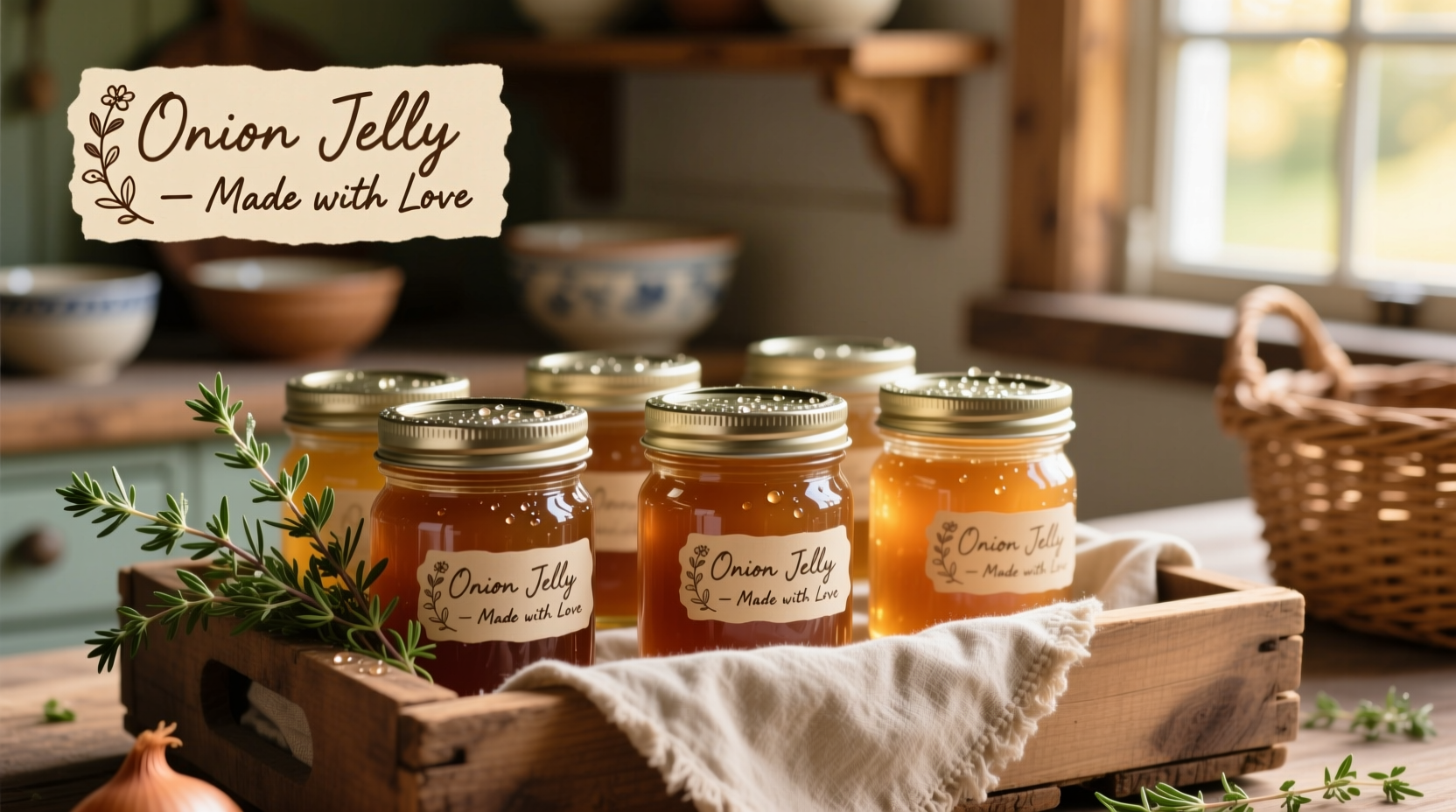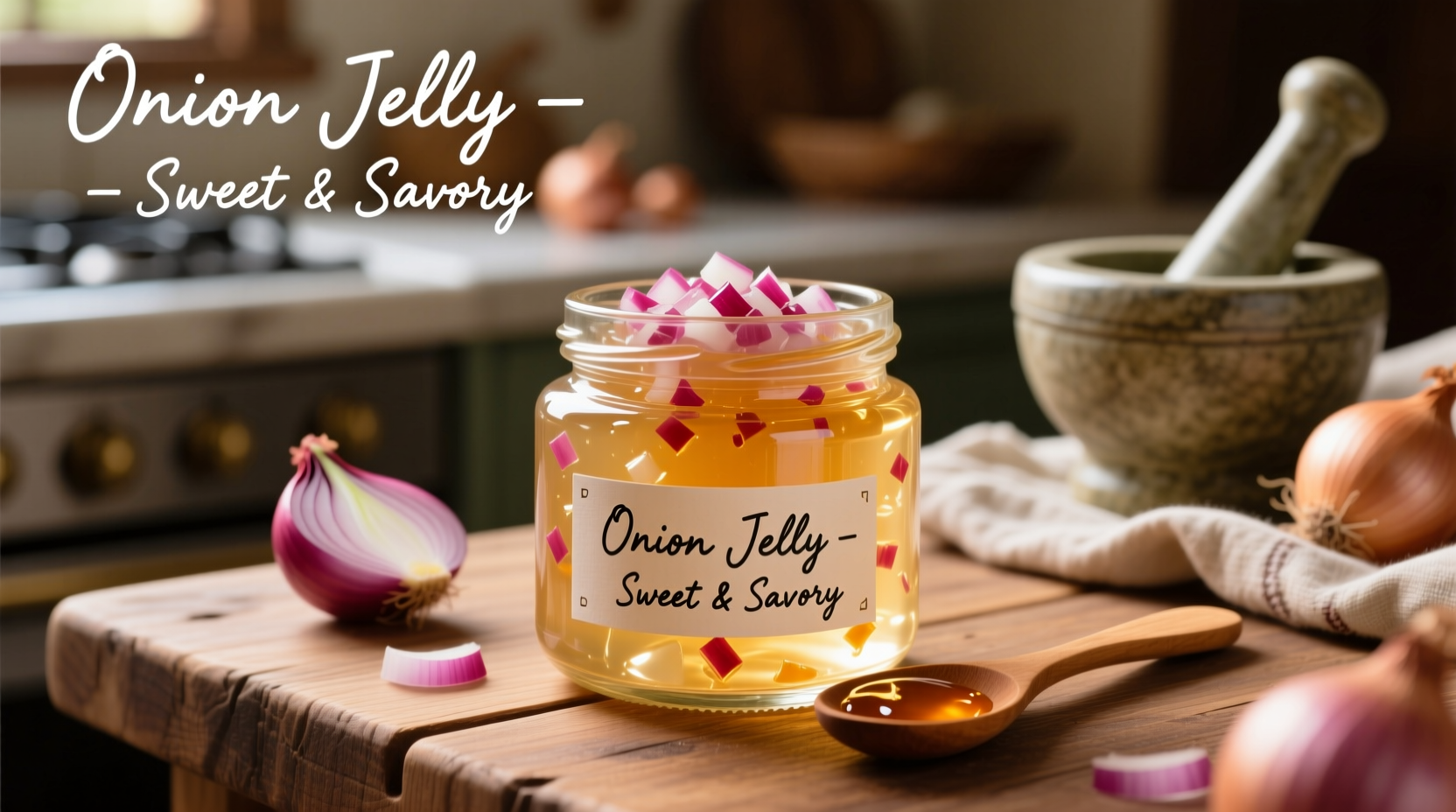Have you ever wondered what to do with that surplus onion harvest? Onion jelly transforms humble alliums into a sophisticated preserve that elevates everyday dishes. This centuries-old technique, documented in USDA preservation guides, creates a versatile condiment that balances sweet and savory notes perfectly.
The Historical Journey of Onion Jelly
Onion preservation dates back to medieval Europe when households needed ways to extend the shelf life of garden produce. Our ancestors discovered that combining onions with acidic vinegar and sugar created a stable preserve through natural pectin release. By the 18th century, onion jelly appeared in English cookery books like Hannah Glasse's Art of Cookery (1747), originally called "onion conserve."
| Historical Period | Preparation Method | Common Uses |
|---|---|---|
| 1700s | Whole onions simmered in vinegar syrup | Accompaniment to cold meats |
| 1800s | Finely chopped onions with apple pectin | Table condiment for roast beef |
| 1900s | Modern canning techniques with precise ratios | Versatile culinary ingredient |
Essential Equipment Checklist
Before starting your onion jelly recipe, gather these kitchen essentials. Proper equipment ensures food safety and optimal texture:
- 8-quart stainless steel pot (avoid reactive metals)
- Candy thermometer (critical for accurate gel point)
- Half-pint canning jars with new lids
- Wide-mouth funnel and jar lifter
- Mesh strainer for smooth texture

Ingredient Selection Guide
The quality of your ingredients directly impacts your onion jelly's flavor. For the best sweet onion jelly recipe results:
Onion Varieties Compared
Yellow onions provide the classic balance, but these alternatives work well:
- Yellow storage onions (best for traditional flavor)
- Vidalia or Walla Walla (sweeter profile, reduce sugar by 25%)
- Red onions (vibrant color, slightly sharper taste)
Use 4 pounds of onions per batch - approximately 8-10 medium bulbs. Always choose firm, blemish-free onions without sprouting.
Step-by-Step Onion Jelly Preparation
Follow these precise steps for perfect onion jelly every time. This small batch onion jelly recipe yields 4-5 half-pint jars.
Preparation Phase (20 minutes)
- Peel and coarsely chop onions (wear goggles to prevent tears)
- Combine 4 lbs onions, 2 cups apple cider vinegar, and 1 tbsp salt in pot
- Cover and simmer 20 minutes until onions soften
- Strain mixture, reserving liquid (you need exactly 2 cups)
Cooking Process (45 minutes)
- Return 2 cups onion liquid to clean pot with 3 cups sugar
- Add 1 cinnamon stick, 6 whole cloves, and 1 star anise
- Bring to rolling boil, stirring until sugar dissolves
- Boil rapidly 20-25 minutes until thermometer reads 220°F
- Remove spices and test gel stage using plate method
Safe Canning Procedures
Proper preservation prevents spoilage. Follow National Center for Home Food Preservation guidelines:
- Process jars in boiling water bath for 10 minutes
- Maintain proper headspace (¼ inch for jellies)
- Store in cool, dark place for up to 1 year
- Refrigerate after opening and use within 3 weeks
Always check for signs of spoilage before use: mold, off-odors, or bulging lids indicate unsafe product. Properly canned onion jelly should have pH below 4.6 for safety.
Culinary Applications and Pairings
Understanding when to use onion jelly versus other preserves enhances your cooking. This versatile condiment shines in specific contexts:
| Best Applications | Less Suitable For |
|---|---|
| Roasted pork loin glaze | Breakfast toast (too savory) |
| Cheese board accompaniment | Baking applications |
| Glaze for roasted root vegetables | Yogurt topping |
| Marinade base for game meats | Cocktail mixer |
For immediate use, try our chef-recommended pairing: spread thinly on crusty bread with sharp cheddar and arugula for an elevated grilled cheese. The sweet-tangy notes cut through rich cheeses beautifully.
Troubleshooting Common Issues
Even experienced preservers encounter challenges. Here's how to fix frequent problems:
- Runny jelly: Reboil with ¼ cup additional sugar, testing gel point every 5 minutes
- Crystallization: Caused by undissolved sugar - always ensure complete dissolution before boiling
- Dull flavor: Add 1 tsp lemon zest during final minute of cooking
- Dark color: Reduce cooking time; onions caramelize quickly at high temperatures
Remember that small batch onion jelly recipes work best for beginners. Larger quantities often fail to set properly due to uneven heat distribution.











 浙公网安备
33010002000092号
浙公网安备
33010002000092号 浙B2-20120091-4
浙B2-20120091-4